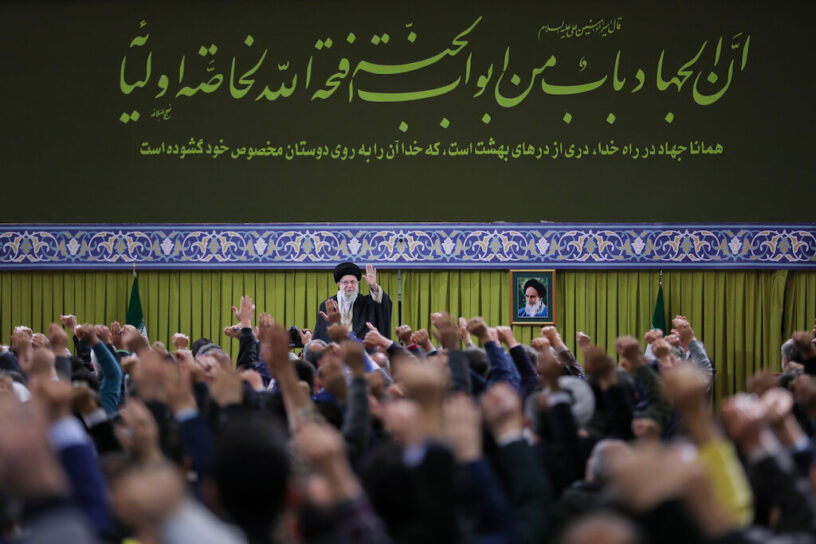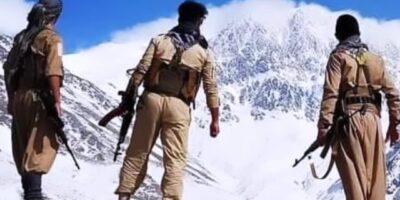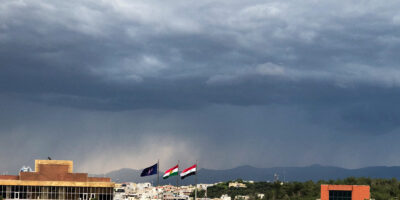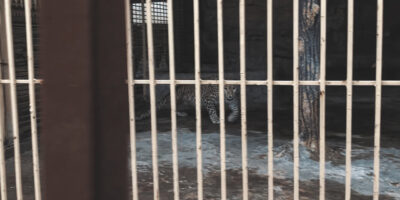The level of news manufactured in high places in Tehran as part of a strategy to counter Israel is so widespread that even regime loyalists say it has undermined Iran’s deterrence abilities at a time when the country is under immense pressure. This phenomenon reached a new level following Iran’s recent setbacks in Syria where a number of senior commanders in the Islamic Revolutionary Guard Corps (IRGC) were killed in suspected Israeli airstrikes.
While Iran and Israel have fought a shadow war for decades, in regime circles there is a belief that in the aftermath of the October 7 war between Palestinian Hamas and Israel, Tehran should respond directly or at least with some strength. This has put pressure on the country’s two main intelligence services and their media arms to deliver “news” that satisfies the regime’s support base.
That is precisely what happened earlier this month. National TV and IRGC media outlets reported that three members of a clandestine Israeli unit were killed in a drone strike in Erbil on December 31 and four were wounded. The wounded were evacuated to Qatar via Erbil airport.
In a separate story, regime media maintained that another Israeli agent was also targeted in a car by a drone in the Kurdistan Region and was killed. Then on January 15, the IRGC fired around a dozen ballistic missiles and weaponised drones at locations in Erbil targeting an alleged Israeli base and killing Peshraw Dizayee, dubbed a “strategic partner of Mossad.” State and IRGC-affiliated media outlets in English, Arabic, and Persian rushed to produce evidence to back up the claim of an Israeli base by publishing photos of Dizayee with Israeli agents.
Iran was finally striking back, regime loyalists must have thought. The only problem was that these stories were not true and even the regime has had to concede that fact.
To begin with, the story about a Mossad agent targeted by a drone while travelling in a car never happened, according to Ali Abdi, an analyst with close ties to the IRGC and Tehran-backed groups in Syria, Lebanon, and Iraq.
The December 31 drone attack on the outskirts of Erbil did not happen at all. The Iraqi resistance claimed they carried out an attack on an Israeli espionage centre in Erbil on December 27 and there was another drone attack on the 30th that targeted a Peshmerga base outside of Erbil. But the source for the fake news about the December 31 attack was a webpage in Hebrew. A screenshot of the page was shared widely in pro-regime social media circles and was eventually picked up by Iran’s national TV and the outlet affiliated with the Supreme National Security Council.
Then came images of Peshraw Dizayee in the company of an alleged Mossad agent published by Iran’s main English mouthpiece Press TV and widely circulated by IRGC’s Tasnimnews and other media outlets affiliated with the country’s security and intelligence services. When they were exposed as fakes, Tasnimnews said that they were not the original source of the altered photos and “the attacks on Tasnim for this pretext have other objectives.”
Press TV said that the altered pictures were received from a “security source” and maintained that it stood by the story about Dizayee.
“We have a problematic media cycle… What I mean is in critical junctures when the public is affected, like when we have been hit or there is a terrorist attack like the assassination of Commander Soleimani… all of a sudden we encounter a wave of fake news that is produced for internal consumption to manage the public anger,” Ali Abdi said recently during a conversation on a web-based TV station affiliated with the regime.
The host of the TV program, who also supports the regime, agreed and said that there was even an Israeli military official created by regime media who has been assassinated by Iran at least six times since Qassem Soleimani was killed by the US in Baghdad.
“There is a worry for me, when public opinion is enraged and demands answers, god forbid, we would not take action like this [Erbil missile strike] for internal consumption,” Abdi cautioned.
“Constantly repeating this action makes our action predictable that as soon as something happens, we target Erbil. The enemy sets Kerman on fire, we hit Erbil. The enemy targets our central drone facility in Mahidasht, and we hit Erbil… This predictable response undermines our national security,” he said.
Another facet of Iran’s response to Israel that involves some manufacturing of material for internal consumption, is the executions of prisoners on spying charges backed by video confessions extracted under duress. Four days after the killing of a senior IRGC commander in Syria on December 25, Iran released TV confessions of four Kurdish men admitting to spying for Israel. They were executed.
The past 45 years of Islamic Republic rule is inundated with stories of serious miscarriages of justice based on fake news and so-called spying charges for Israel. From 2009 until 2019, a comprehensive report found that 355 confessions extracted under duress were aired on state TV in Iran.
Israel continues to strike IRGC assets in Syria. On Saturday it killed five officers including the IRGC Quds Force intelligence chief in the country.
With no apparent options to strike back at Israel, Iran will carry on concocting fake news against its foe to satisfy its support base and there will be no shortage of prisoners to dangle from the gibbet on charges of spying for Israel with no access to a fair trial. There are currently another four Kurdish men whose confessions have already been aired on state TV. They could be executed early one morning as the call to prayer goes out.




